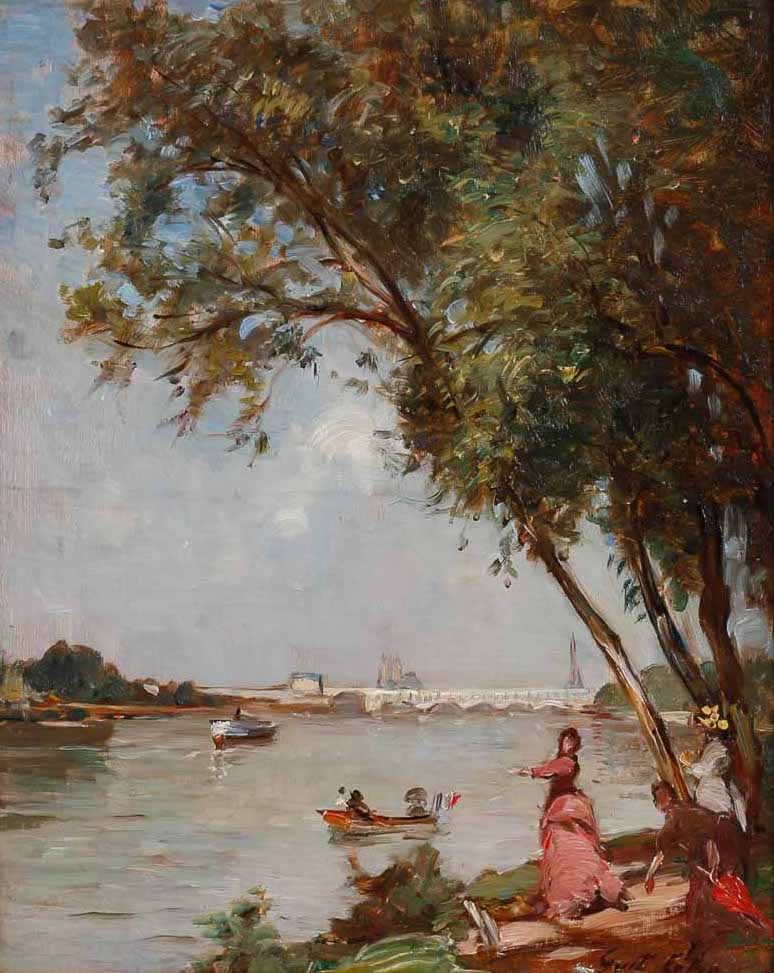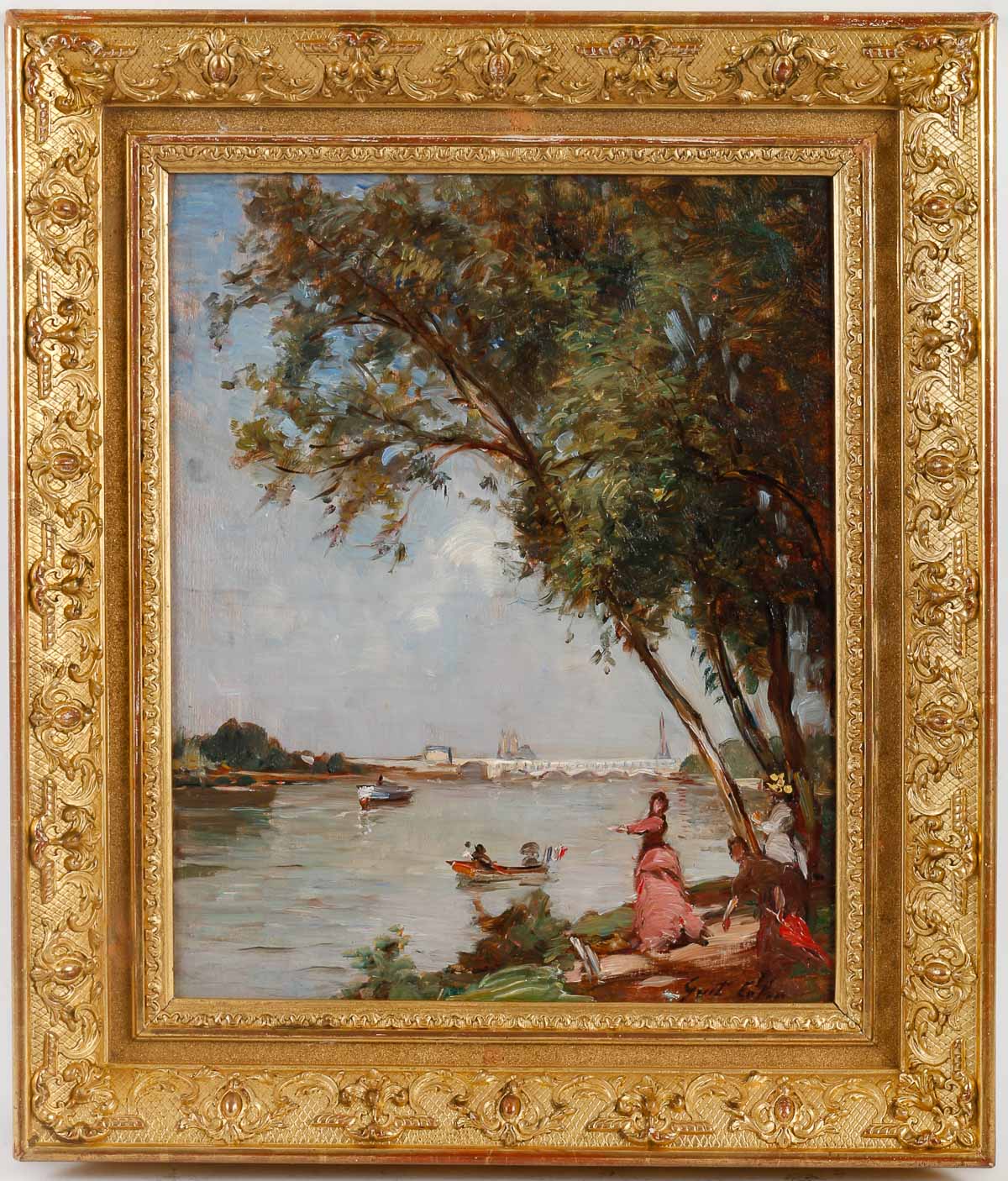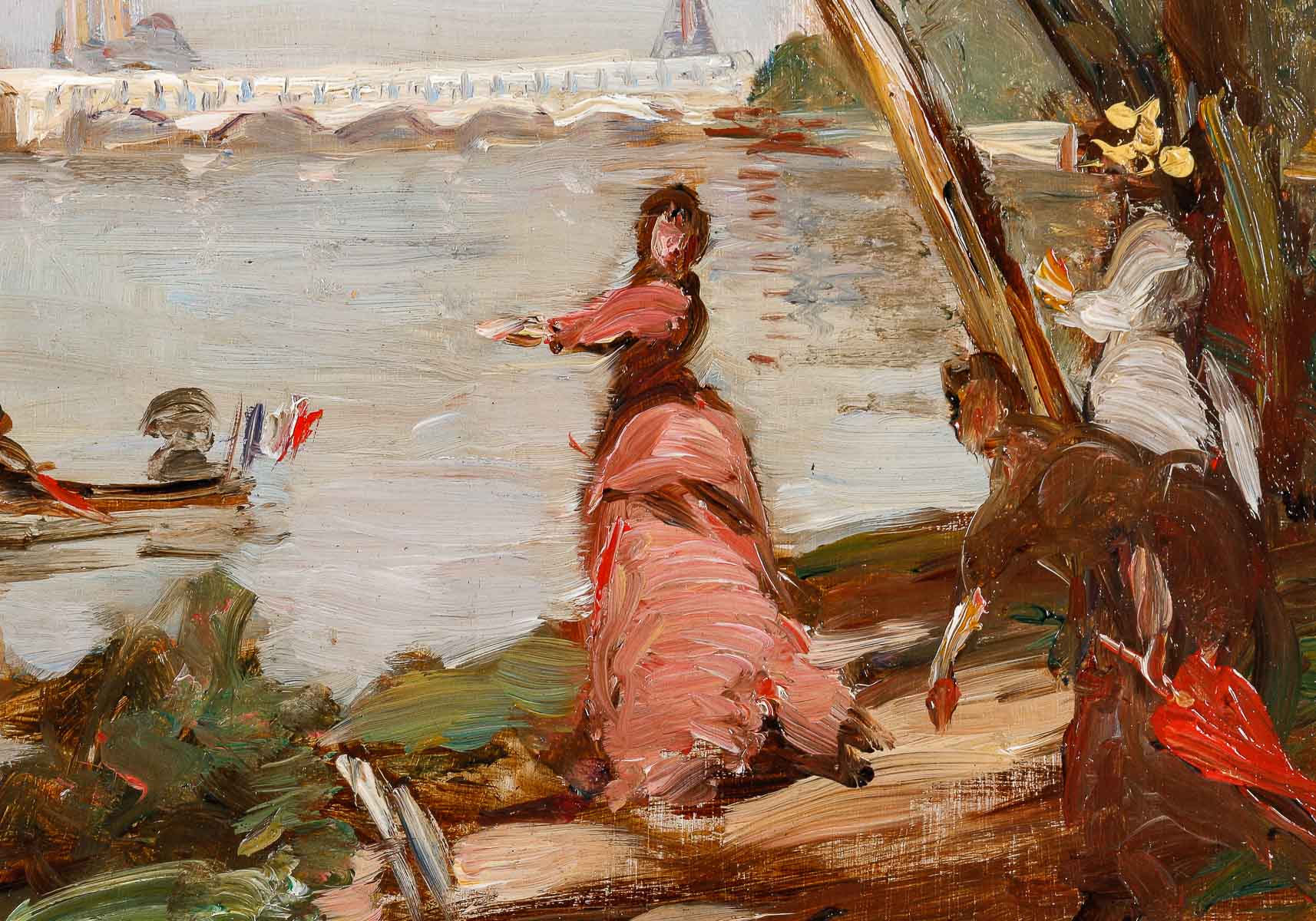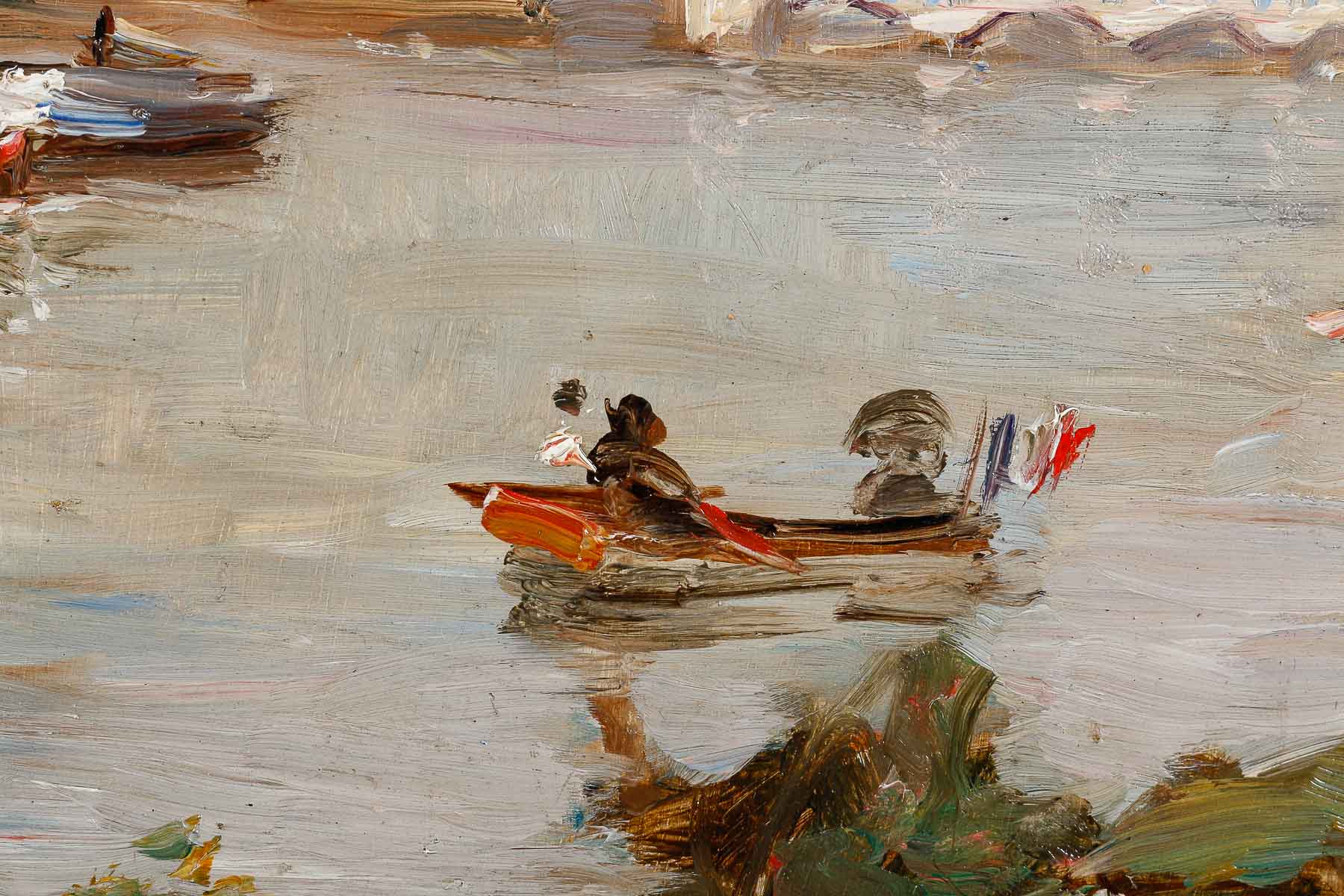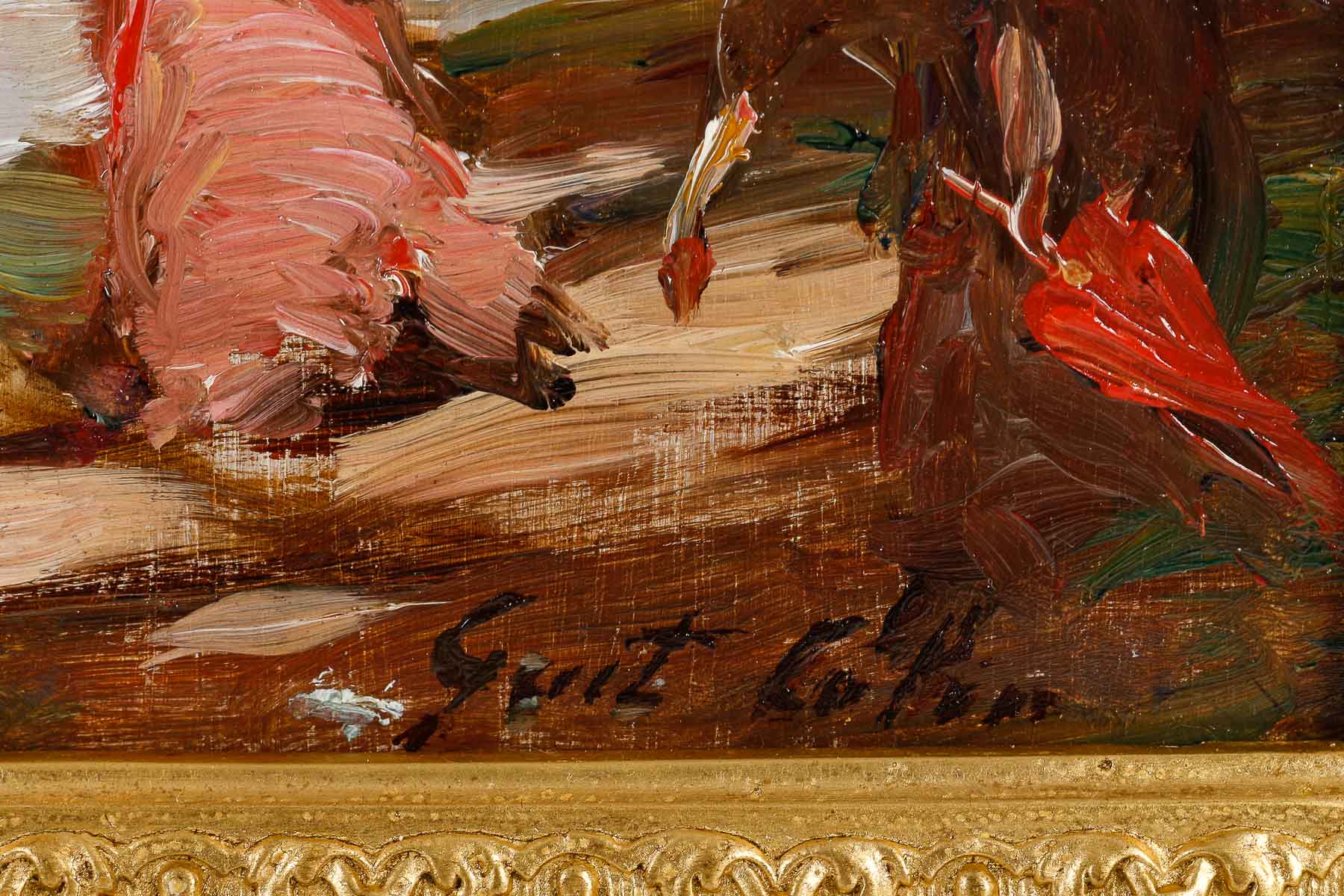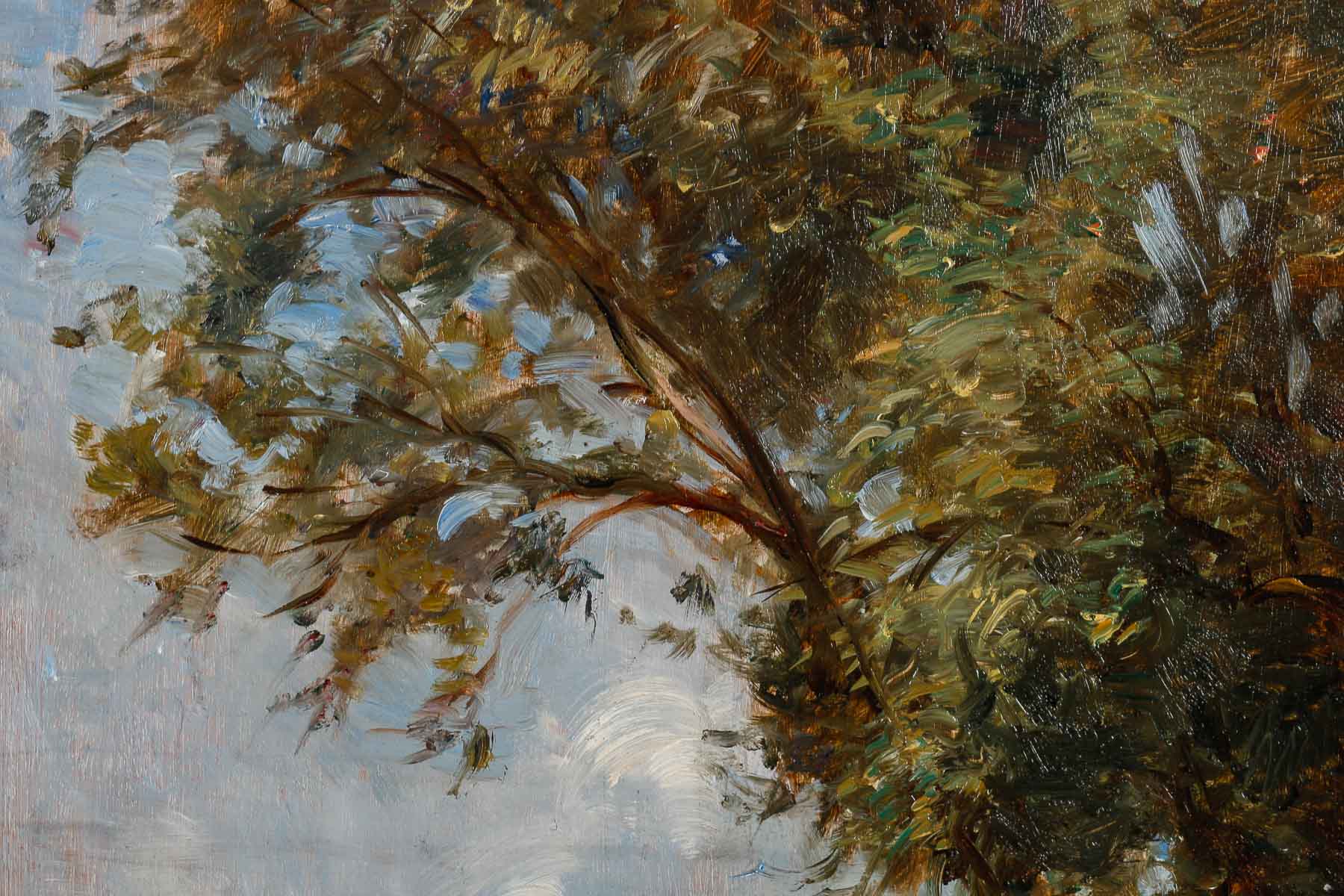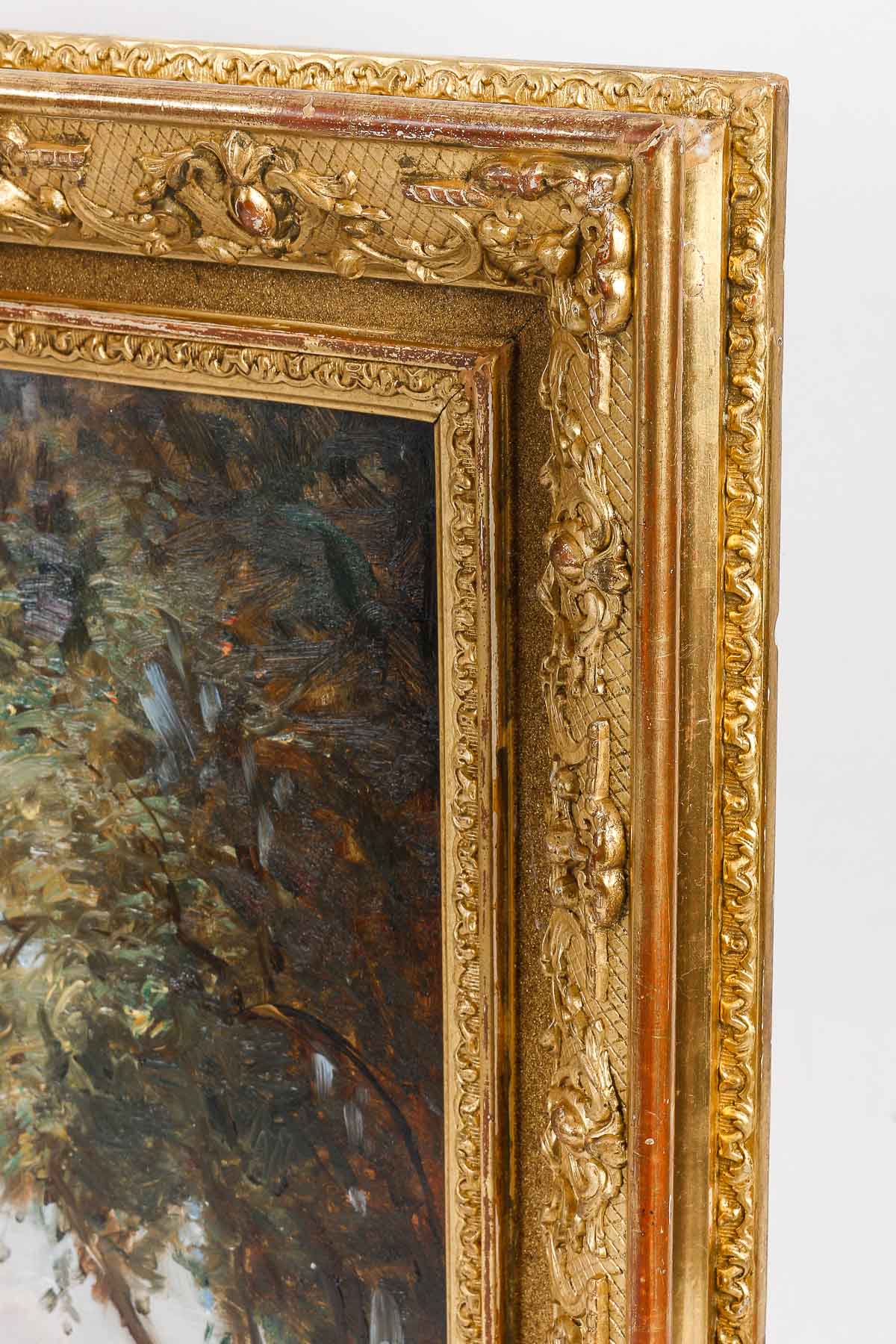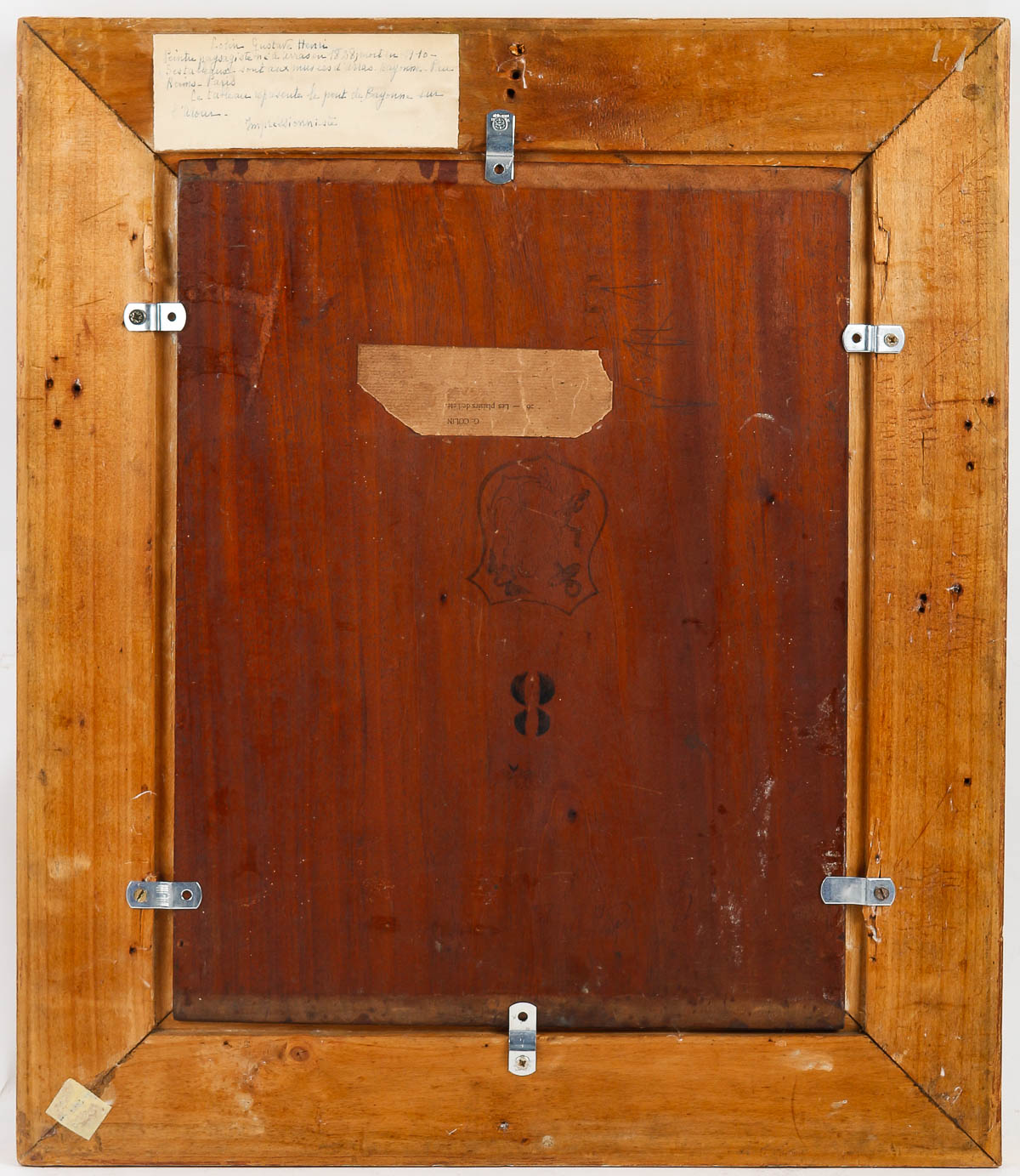Gustav Colin
Sur les bords de L’Adour, an impressionist work, with a lively, strong and luminous touch. Three elegant ladies come to relax by the water. The town of Bayonne can be seen in the distance.
Oil on mahogany panel
Signed lower right
Titled on the back on an old label “Les plaisirs de l’été” (“Summer pleasures”).
Dimensions: 41 x 32 cm
With frame: 55 x 47
Price: 5500 euro
The banks of the Adour, Bayonne, Basque Country.
Gustave colin seduced by the Basque country. He painted many canvases there
When Gustave Colin moved to the Basque country around 1860, he was already a “modern” alongside his master, Camille Corot, who came to set up his easel in Ciboure in 1871. Many Impressionists then travelled to the Basque Country to paint and draw.
In the distance, we can see the city of Bayonne, the Sainte Marie cathedral, the Saint André church and the Saint Esprit bridge over the Adour river.
An impressionist painting with free, brushed paste.
Three elegant women stroll along the banks of the Adour river on the outskirts of Bayonne, a typical Impressionist subject entitled “Summer Pleasures” by the painter. The work, certainly painted on the motif, is brushed with quick, energetic strokes.
The viewer’s eye is drawn to the play of colorful patches in the women’s colorful outfits in the foreground, then loses itself in the distance to the Saint Esprit bridge, which catches the light.
The work is luminous, treated with broad brushstrokes and an astonishing sense of sunlight.
Bibliography
From Paris to the Basque beaches
On the urgent advice of his father, a judge by trade, Gustave Colin left to study law at the Paris Law School in 1850, but abandoned his studies in 1853 to devote himself definitively to painting. From then on, he frequented the studios of Ary Scheffer and Thomas Couture, as well as the cafés where the future masters of French painting gathered. After several exhibitions in Arras, he was admitted to the Paris Salon in 1857. A professor of painting at the Académie Julian, his reputation was firmly established with his participation in the Salon des refusés. A passionate traveler, Gustave Colin was drawn to the Basque country and Ciboure (Pyrénées-Atlantiques) in particular, a fishing village steeped in local culture and maritime tradition that attracted a large number of painters. Here, in 1860, he married Marie Carmier Couspeire and settled before moving to Saint-Jean-de-Luz in 1862, where he painted many rural scenes.
Le salon des refusés
In 1863, the Salon jury rejected many works by young painters. Faced with numerous protests, Emperor Napoleon III decreed that a “Salon des refusés” would be held, grouping together works that could not be shown at the official Salon. Gustave Colin’s painting, Basques espagnols jouant à la pelote sous les murs de Fontarabie (Spanish Basques playing pelota under the walls of Fontarabie), now in the Musée Basque in Bayonne, was a huge success. The remarkable workmanship of his compositions and colors was praised by critics, who were sensitive to pictorial evolutions and to scenes of open air and daily life, far removed from traditional religious or mythological motifs.
The first Impressionist exhibition
In Paris, Gustave Colin rubbed shoulders with the future masters of Impressionist painting, and was invited by them to take part in the first Impressionist exhibition at the Durand-Ruel gallery in 1874, where he presented five paintings.
Particularly appreciated by Count Doria, who was to become his patron, the art dealer Ambroise Vollard, the Rouart family and many others, he exhibited regularly in Paris (from 1890 at the Salon du Champ-de-Mars, organized by the Société nationale des beaux-arts) and won a medal of honor at the 1880 Salon, as well as a silver medal at the 1889 Universal Exhibition; he was made a Knight of the Legion of Honor in 1899 and an Officer in 1907.
Gustave Colin, who died on December 28, 1910, is buried in Ciboure’s Belvedere cemetery, where a street bears his name. The artist left an abundant body of work: his portraits, light-filled landscapes, genre scenes and bullfights can be found by the dozens in museums and private collections. The Musée d’Arras owns around thirty of them, including the Self-portrait of 1858, the Lille Le Castillo and the Goulet de Pasagès. Marée haute, the Musée d’Orsay in Paris The artist’s wife, not to mention the many works preserved in Pau and Bayonne.
Bibliography
– Hans Peter Bühler, “Colin Gustave”, Allgemeines Kunsterlexikon, 1998
– Gérard Schurr, Pierre Cabane, Dictionnaire des petits maîtres de la peinture, 1820-1920, t. II, Paris, Editions of the amateur, 1996
-Sophie Monterez, “Impressionism and its time” Dictionnaire international-Delanoël- Filipacchi
-1920, t. II, Paris, Editions of the amateur, 1996
Museums
– Paris, Musée d’Orsay
– Arras, Musée des Beaux-Arts :
– Bayonne, Basque Museum and Bayonne History :
– Bosmie-l’Aiguille, castle :
– Compiègne, Antoine-Vivenel Museum :
– Douai, Musée de la Chartreuse :
– Lille, Palais des Beaux-Arts :
– Marseille, Musée des Beaux-Arts :
– Paris, Musée d’Orsay :
– Pau, Musée des Beaux-Arts :
– Le Puy-en-Velay, Crozatier Museum:
– Reims, Musée des Beaux-Arts :
– Vitré, castle museum
Source
https://fr.wikipedia.org/wiki/Gustave-Henri_Colin#Hommage
https://www.archivespasdecalais.fr/Recherche-par-commune/Lettre-A/
Arras/Birthdays-and-events/Birth-a-Arras-of-the-artist-Gustave-Colin

